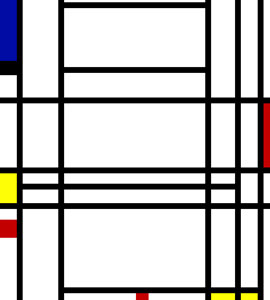Thursday, May 6, 2010
Utopia Matters: from Brotherhoods to Bauhaus
From May 1 - July 25, 2010, the Guggenheim museum in Venice will be presenting "Utopia Matters: From Brotherhoods to Bauhaus." The exhibit is headed by Vivien Greene, who curates the 19th and early 20th century Art at the Guggenheim Museum in New York.
Utopia Matters will examine "the evolution of utopian ideas in modern Western artistic thought and practice" and features over 70 works of art drawn from the decorative arts, design, photography, paintings and sculpture. A broad spectrum of historical Utopian art movements will be examined, including the Pre-Raphaelite Brotherhood, Primitivism, the German Nazarenes, William Morris and the Arts and Crafts movement, Neo-Impressionism, De Stijl, Bauhaus and Constructivism. The exhibit will end with works from the 1930s, when the Bauhaus was closed.
If you haven't noticed (the title of this blog is pretty much a dead giveaway), I'm quite the fan of Utopian artistic movements, so this is one exhibit I would dearly love to see. I've always been fascinated by the intersection of art and idealism, and there are countless fascinating historical examples of artistic groups and individuals who have sought to improve life through art.
Utopia Matters was first seen from January 22-April 11, 2010 at the Deutsche Guggenheim Berlin, so if you were lucky enough to attend that exhibit, be sure to leave a comment and let us know what you thought! I'm afraid a trip to Venice before July probably isn't in the cards for me, but I would love to hear what others have to say about their visits.
Image is Piet Mondrian's Composition 10, courtesy Wikimedia.
Posted by
Margaret
at
7:39 AM
![]()
![]()
Labels: arts and crafts, museums, news, pre-raphaelites, william morris
Subscribe to:
Post Comments (Atom)



7 comments:
One of my school textbooks had a Mondrian piece on the cover. (I remember the artist, but not the subject of the book. What does that tell you?)
I have crawled all over The Bauhaus, in Weimar, Dessau and Berlin. One of the interesting questions is always which movements and artists influenced them. For a start, we could suggest Glasgow School of Art, English Arts & Crafts Movement, Morris Co and the Deutche Werkbund.
Perhaps the exhibition at the Guggenheim museum in Venice might shed further light on the question of influence - political and stylistic. I wish I could get there. Will there be a catalogue, do you know?
Hi Margaret! Thank you for visiting today! I am happy that you were able to capture some otherworldly images and dreams chez moi today, and please, come by anytime you want to "get away"!!
Anita
that's interesting, margaret. i've just recently been realizing the degree to which artists have done this, groups, into groups, into smaller groups, recombining and re-joining in so many permutations....
It's been a while since I've visited The Earthly Paradise, and I'm glad I got around to it. Thanks for the heads-up on the exhibit. My next "philosophical perspectives" class will deal with technology, art, and utopia, and this gives me a nice resource. I'm actually going to be using bits of Morris's "Earthly Paradise" in my myth class segment on the Pre-Raphaelites and illustration next week, and will link your blog so the students can share in the great stuff you send our way. Thanks, as always.
Mondrian's later work always reminds me of my textile design studies when I was at school. We had to write about how art had influenced fashion design, in the sixties there were shift dresses in white with black and white lines and red and blue rectangles! A sort of shift dress/mini dress shaped Mondrian!
That's so neat! Geometrics were really popular during the sixties - I never thought about it that much, but obviously art and fashion are so interconnected that Mondrian was bound to end up on a dress sooner or later!
Post a Comment